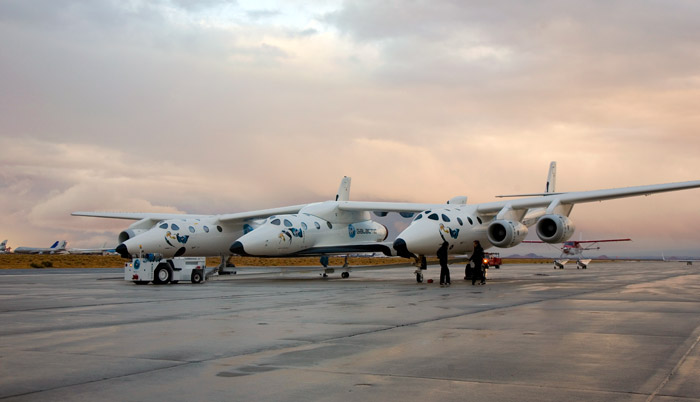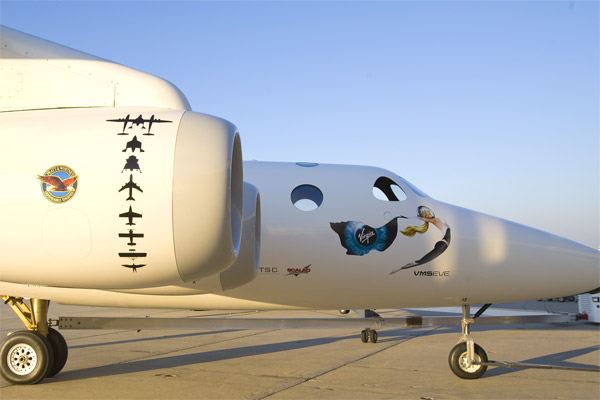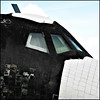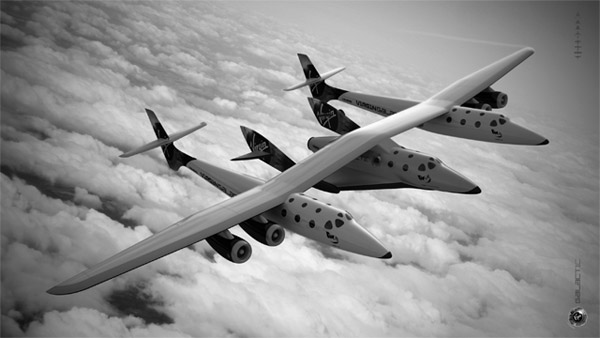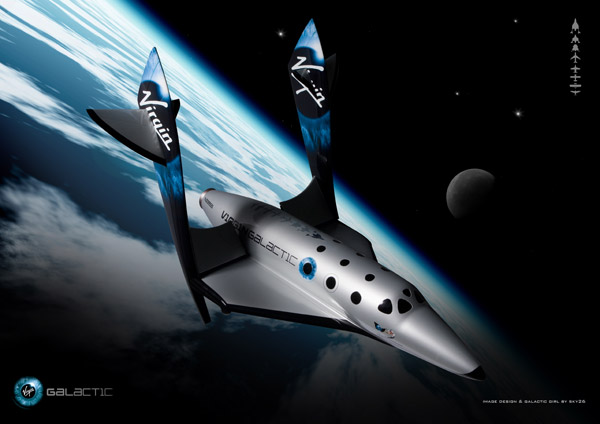The New Mexico Spaceport Authority and representatives from the architectural/design team for Spaceport America unveiled renderings of the main terminal and hangar facility at a press conference in Las Cruces.
URS Corporation and Fosters + Partners was awarded the design of the 100,000 square-foot facility, which will serve as the primary operating base for Virgin Galactic and headquarters for the New Mexico Spaceport Authority.
The U.S.-British team created a low-lying, striking design that uses natural earth as a berm, and relies on passive energy for heating and cooling, with photovoltaic panels for electricity and water recycling capabilities. A rolling concrete shell acts as a roof with massive windows opening to a stunning view of the runway and spacecraft.
A prominent United Kingdom architectural firm, Foster + Partners has extensive experience in designing airport buildings. They are well known for constructing many high-profile, high-tech glass and steel buildings worldwide. Company founder Lord Foster said, “We are absolutely thrilled to be part of the dynamic team chosen to design the world’s first space terminal. This technically complex building will not only provide a dramatic experience for the astronauts and visitors, but will set an ecologically sound model for future Spaceport facilities.”
The world’s first purpose-built commercial spaceport is designed to convey the thrill of space travel while making a minimal impact on the environment. The low-lying, organic shape resembles a rise in the landscape, and will use local materials and regional construction techniques. A careful balance between accessibility and privacy is achieved, as visitors and astronauts enter the building through a deep channel cut in the landscape. The walls will form an exhibition area leading to a galleried level above the hangar that houses the spacecraft and on through to the terminal building. Natural light enters via skylights, with a glazed façade reserved for the terminal building, establishing a platform for spectacular views onto the runway.
Kelly O’Donnell, Chair of the NMSA, is pleased with the design of the hangar and terminal facility. “The design created by the URS/Foster team is outstanding in the way it blends in with the environment, creating a shape that is both distinctive and functional while complementing the landscape,†O’Donnell said.
Working together with Foster + Partners on the project, URS Corporation is one the largest engineering and design firms in the world, and a prominent contractor for the United States government. With offices in the Americas, Asia-Pacific region, and Europe, URS is a full-service, global organization providing architectural and design services in 20 nations. “The URS team is very pleased to have been selected for this breakthrough project,†said Jens Deichmann, vice president of URS Corporation. “Our team of New Mexico, regional, and international talent is excited to help the State of New Mexico and Virgin Galactic advance their goals of commercial space travel and scientific and engineering education.” Designed to have minimal embodied carbon and few additional energy requirements, the spaceport has been planned to achieve the prestigious LEED Platinum accreditation. The low-lying form is dug into the landscape to exploit the thermal mass, which buffers the building from the extremes of the New Mexico climate as well as catching the westerly winds for ventilation.
The terminal and hangar facility are projected to cost about $31 million, and will provide a destination experience for visitors to Spaceport America. It will include Virgin Galactic’s pre-flight and post-flight training facilities and lounges, as well as the maintenance hangar for two White Knight 2 and five Spaceship 2 aircraft. The building will also be home to the NMSA, and provide a destination experience for visitors.
Sir Richard Branson of Virgin Galactic said, “I am delighted that New Mexico has chosen this excellent team to design Spaceport America. Their track record is exciting enough, but the vision for the world’s first purpose-built private spaceport is truly out of this world.†Looking to the future, Branson said, “Next year will see the first test flights of Spaceship 2 and it is fantastic that we will now have a permanent home to go to, which will be every bit as inspiring for the astronauts of the future as Burt Rutan’s groundbreaking technology.â€
NMSA is currently finalizing contract negotiations with URS and Foster + Partners. The team will then begin working with the NMSA and Virgin Galactic to finalize the design of the facility, and the NMSA expects to put the construction of the facility out for bids in the first half of 2008. Meanwhile, the other elements of the spaceport, including roadways, runway, security, water, power and communication systems, are currently being designed by DMJM: AECOM and will be put out for construction bids later this year. Construction of Spaceport America will begin in 2008, immediately after the FAA issues the site operator’s license to the NMSA. Completion is expected in late 2009 or early 2010.
Links:
http://www.spaceportamerica.com
http://www.virgingalactic.com
